We recently received an inquiry about the dam ruins in Erindale Park. For many visitors today it can be hard to fathom that the area that is now Erindale Park was, for over 30 years, mostly submerged under water.
Beginning in 1898, plans to harness the natural water resources of the Credit River for hydroelectricity were being discussed.
In 1901 the endeavour focused on the bend on the Credit River at Erindale. Construction on the dam began in 1904 under the direction of the Southern Light and Power Company. The Company went bankrupt in 1906, with the project still incomplete. This was only the beginning of this trouble-plagued project.
The hydro development commenced again under the direction of the Erindale Power Company in 1909.

In March of 1910, the last 150-foot section in the middle portion of the dam was being filled in, and the powerhouse was transmitting power. On March 7, 1910, a 35-foot high centre portion of the nearly completed dam collapsed, as the water behind the dam had risen to dangerous levels due to a sudden spring thaw.
The massive spring flood washed out a large section of Dundas Street and the Dundas Street Bridge over the Credit River. This was not repaired until the summer of 1910. By August of 1910 the dam had been patched and the operation was back up and running. This would not be the first challenge the dam faced.
The dam on the Credit River (in what is today Erindale Park) created a head pond (known locally as “Lake Erindale”) that covered 125 acres. The water was conveyed through a tunnel from the lake, running under Dundas Street, and dropping down into the Powerhouse via large pipes to turn the turbines which were directly connected to generators. The water then exited the powerhouse via the tail race and rejoining the river on the south side of Erindale Village.
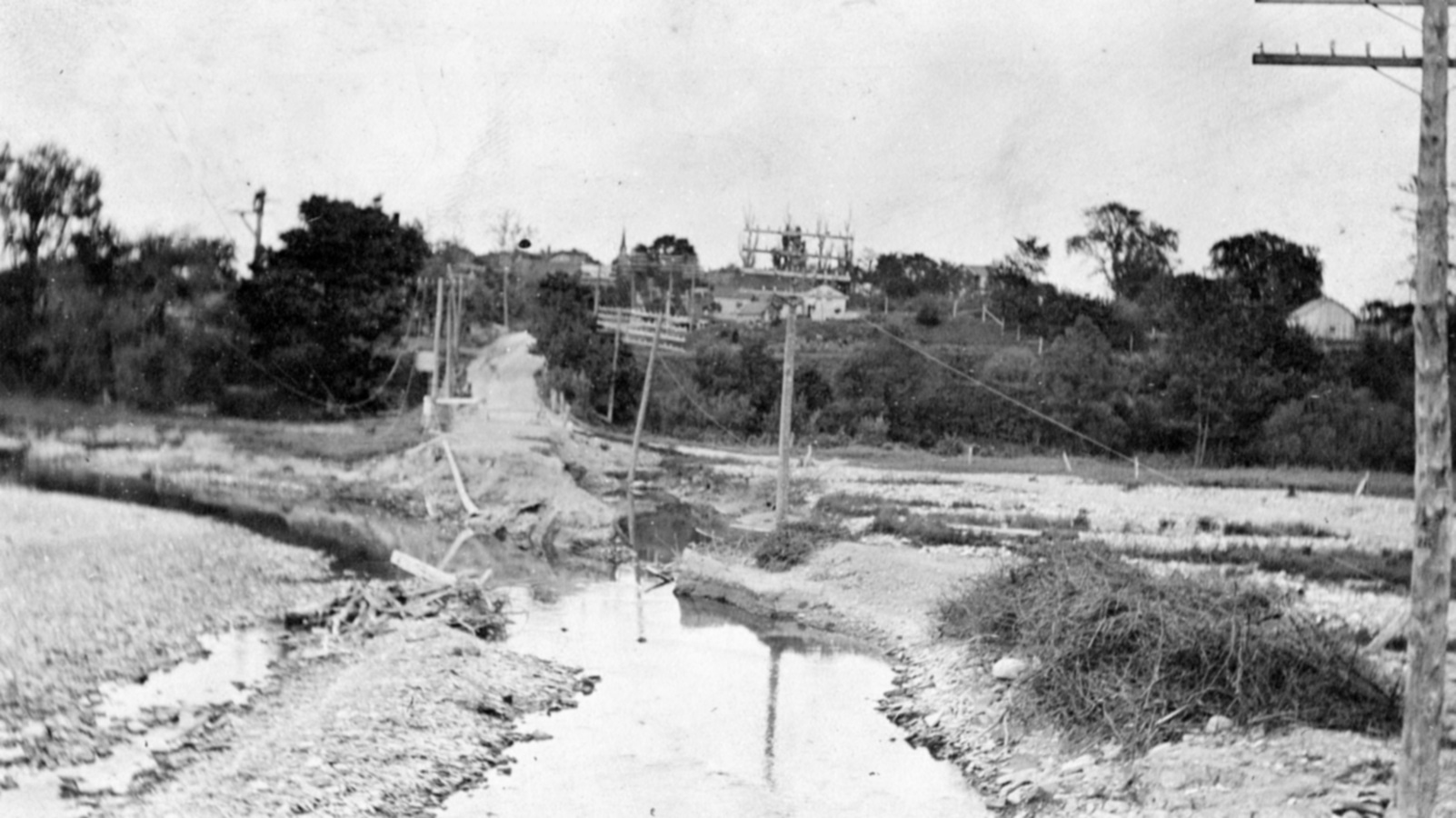
When it was fully operational, which was seldom, the Hydroelectric Station of the Erindale Power Company provided electricity via a wood-pole transmission line to substations in West Toronto supplying power to North Toronto, New Toronto, Swansea, Islington, Erindale, Cooksville, Dixie, Long Branch, Mimico and Lambton, through a common grid system.
The newly formed Ontario Hydro-Electric Power Commission purchased the facility in 1916, and in 1917 the powerhouse caught fire. It was out of operation for a short time, reopening in the late fall of 1917.
Tragedy occurred on January 7, 1921, when electrical engineer, Edward George (“Teddy”) Little fell into the turbine pit in the powerhouse and was killed at the age of 31. The cause of death was a fractured skull, and he was buried at St. Peter’s Anglican Cemetery in Erindale.

The operation was beset by difficulties, and the powerhouse only functioned at 100% capacity for a short time. On April 6, 1912, a smaller dam upstream failed, and a tremendous spring flood occurred which washed out a 10-foot-tall centre portion of the dam, reducing the height of water in the lake.
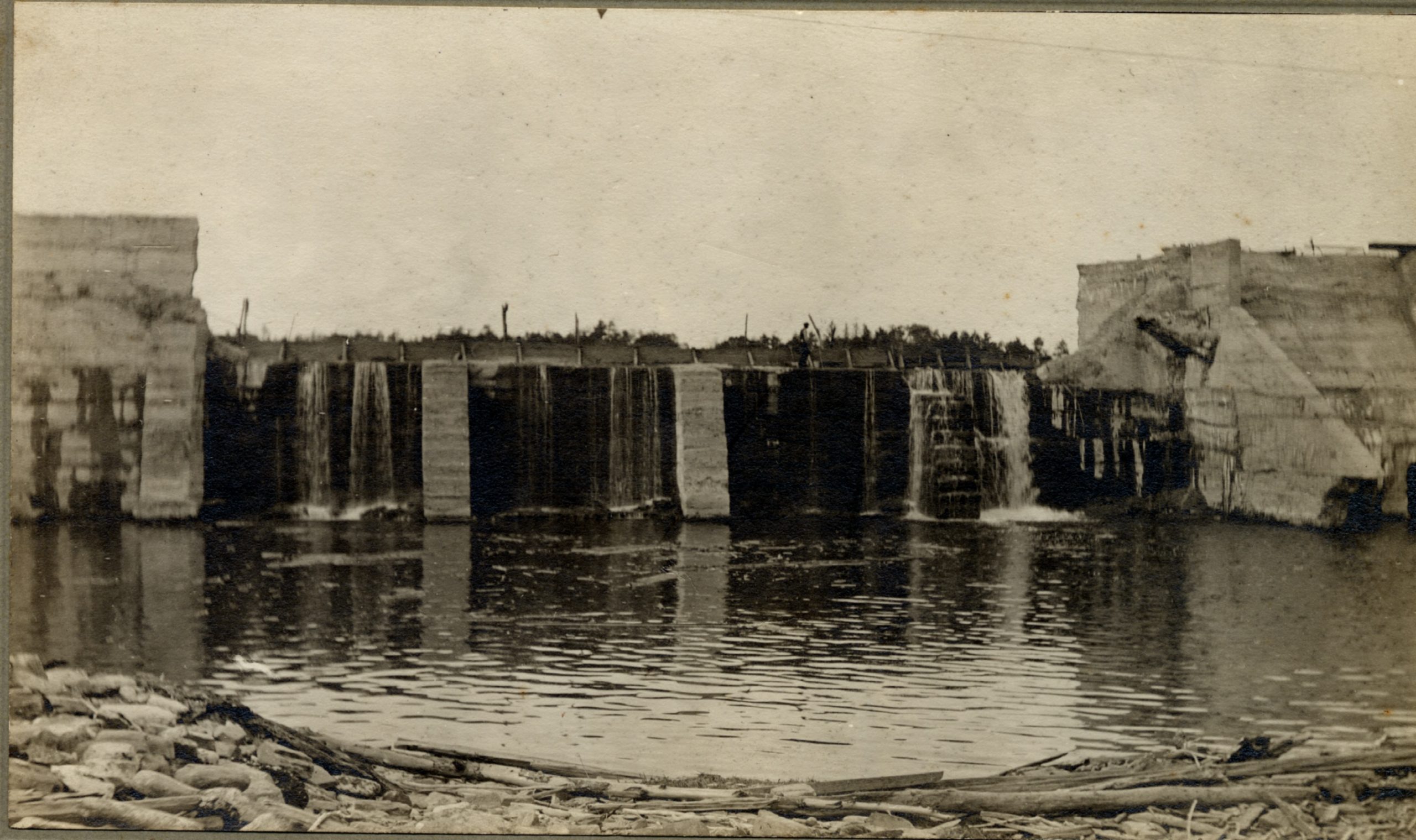
Repaired again, the dam failed once more in 1923, collapsing part of the repaired centre section and sluiceway and reducing the water level in the head pond. The facility operated until mid-1923 when the Chippewa plant in Niagara was opened. After the facility closed, maintenance on the dam declined. Another flood in 1935 threatened to undermine the dam.
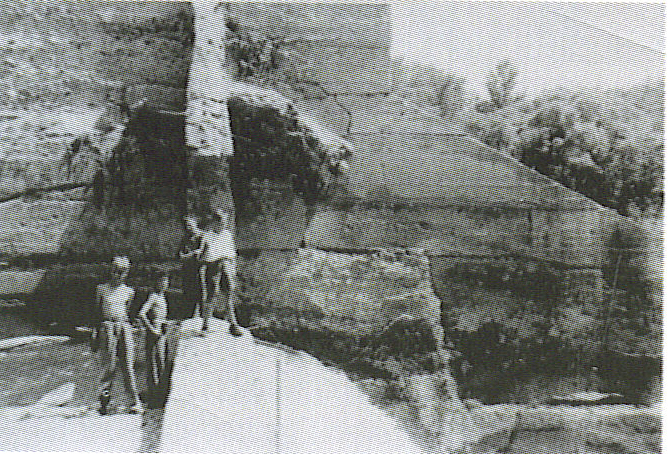
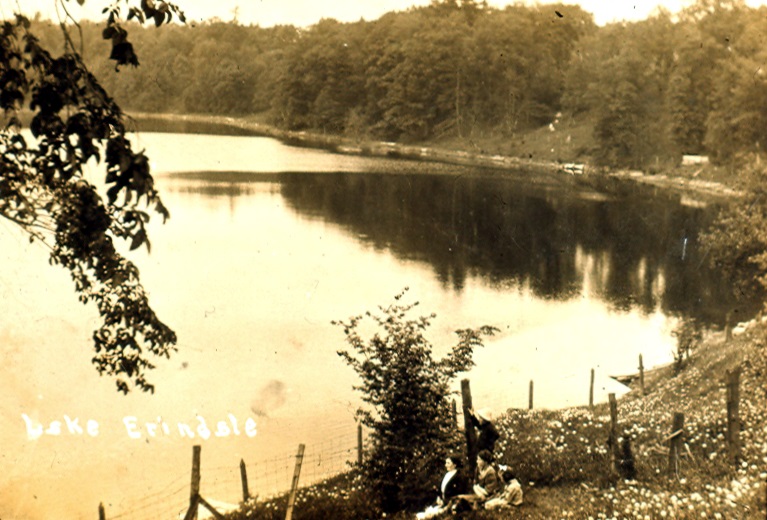
Between 1938 and 1940 the hydro pond (“Lake Erindale”) was drained, and the dam was finally dynamited in 1941 after major safety concerns were raised by nearby residents.
The remnants of the powerhouse were removed in 1977.
Erindale Power Project Technical Data
Dam:
700 feet long with 100 feet concrete spillway section and three sluiceways; the remainder was an earth embankment with a concrete core at its centre.
Tunnel:
900 feet long with a 12-½ foot horseshoe cross-section made of reinforced concrete 18 inches thick.
Powerhouse:
2 turbines, one for each unit, were a single runner, Horizontal Francis type 50 inches in diameter, built by Charles Barber Sons, from Meaford, Ontario. Rated at 840 HP operating under a head of 56 feet, each wheel was controlled by a governor connected to a three-phase, 60-cycle, 13,200-volt generator that ran at 200 RPM.
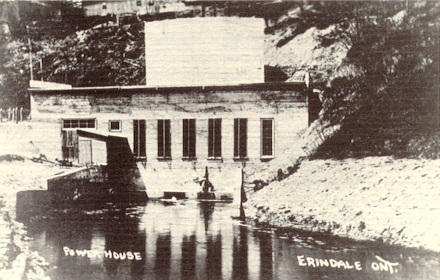
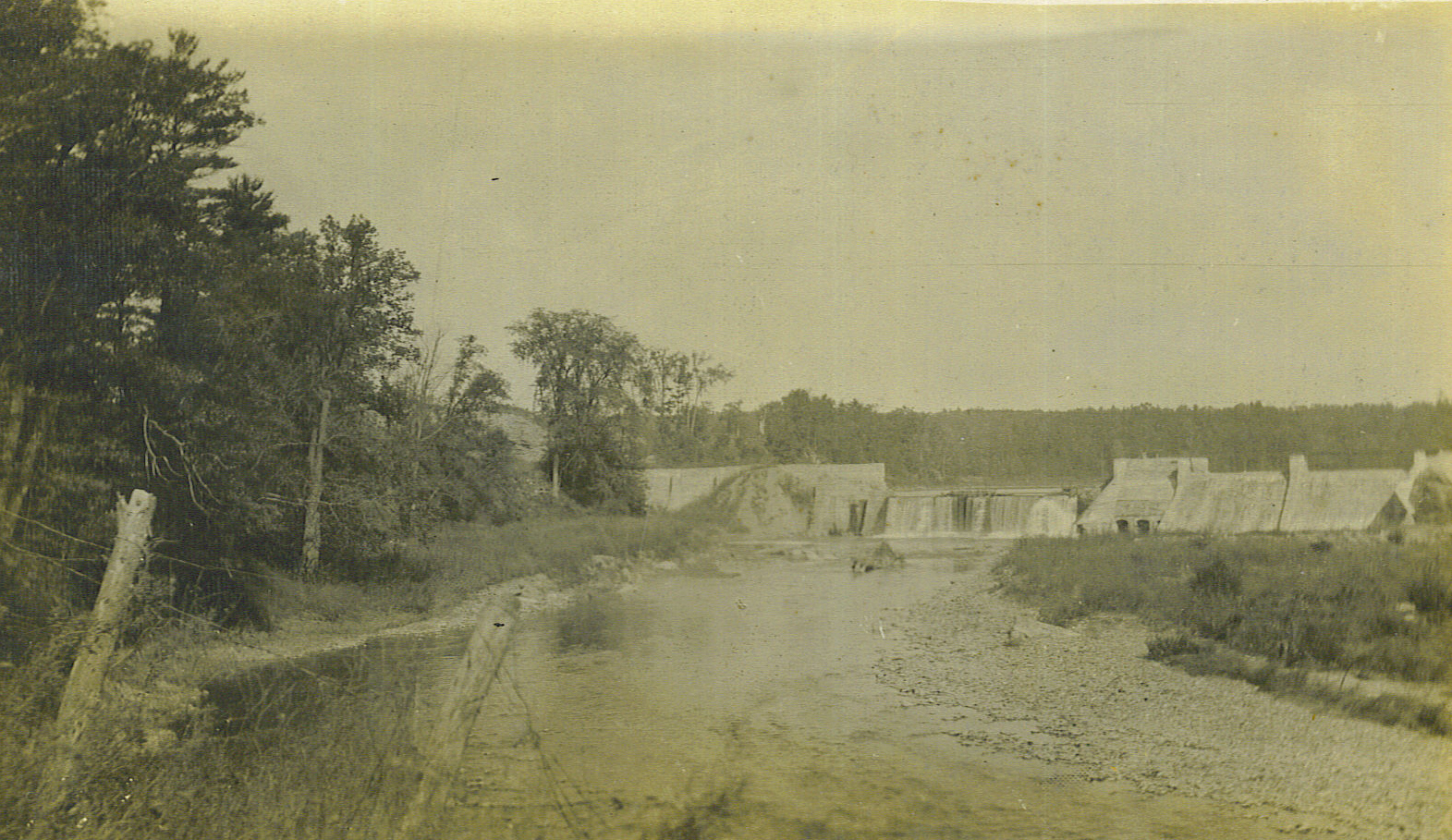



Comments are closed.